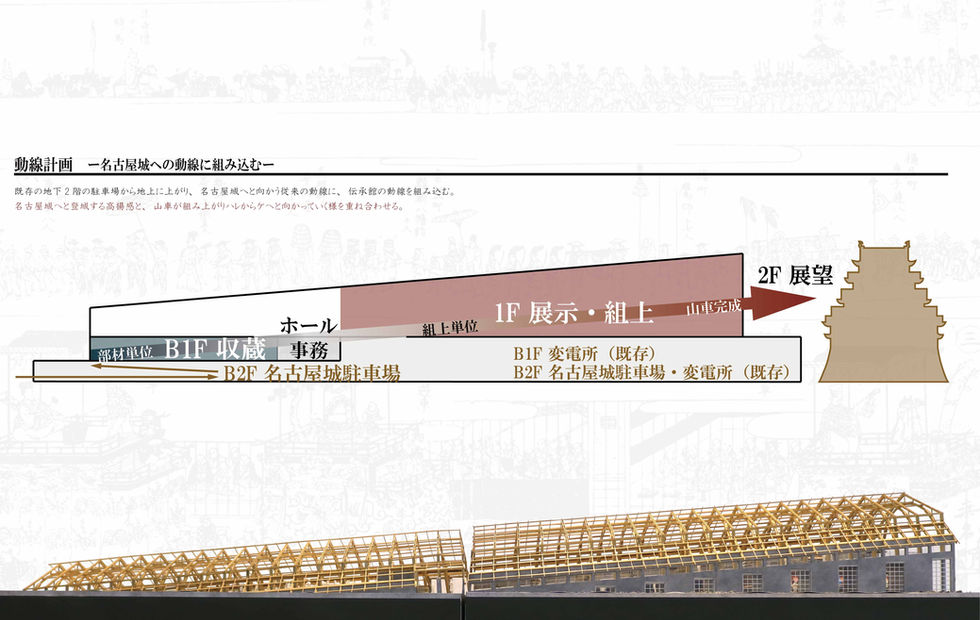2022年度 卒業設計
「山車祭りが華やぐまで」学内優秀賞、第14回建築コンクール 一次投票選出作品
Gohta Kaneko
都会化以前から存在する伝統的なモノとコトは、かつてのまちと都会とのスケール差に苦しんでいる。両者のスケールを行き来する空間を提案することで、都会の新たなポテンシャルを探りながら共存を図ろうとした。名古屋の中心部にはかつて山車祭りというハレの場が存在したが、都会化の波に飲み込まれ消滅した。祭りというコトは行われなくなったが、コトを成立させるモノ(古材)は今もなおハレが残る周辺部に引き継がれ、山車蔵の中で眠っている。古材の残存状況を調査し、部材ごとの関係を調べた結果、周辺部から古材を中心部に集め、山車の組み立て過程に沿って展示することでうまく解決できると考え本提案に至る。本提案は、ケからハレへと移り変わる過程を示すことで、ハレの消失を物語るレクイエム的な演出をしている。同時に、今もなおハレが残る周辺部においても、ケからハレへ向かう行為の簡略化が行われ、その継承にも役立てられる。
Traditional objects(mono) and things(koto) that existed before urbanization suffer from the difference in scale between the former town and the city. By proposing a space that moves between both scales, I tried to coexist while exploring the new potential of the city. In the center of Nagoya, there used to be an occasion of *Hare called the Dashi matsuri (float festival), but it was swallowed up by the waves of urbanization and disappeared. Although koto (the festival) is no longer held, mono (the old materials) that made koto (the festival) possible are still found in the surrounding area, where Hare still remains, and they lie dormant in the float warehouses. After surveying the remaining old materials and examining the relationship between the different parts, I thought I could successfully solve the problem by gathering the old materials from the periphery into the center and displaying them along the assembly process of the floats. This proposal is a requiem-like direction that tells the story of the disappearance of Hare by showing the process of transition from *Ke to Hare. At the same time, it will be used for the inheritance in the peripheral areas where Hare remains and the act of moving from Ke to Hare are simplified.
*'Hare' means special days and places used for celebratory events, and 'Ke' refers to ordinary everyday life.







